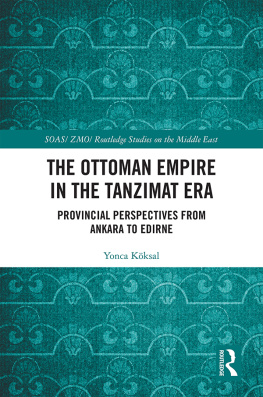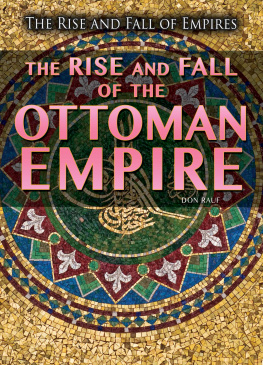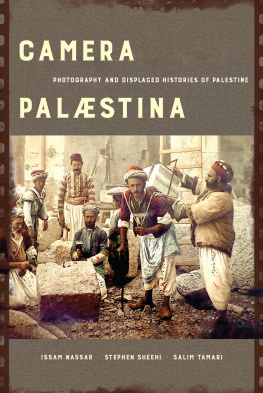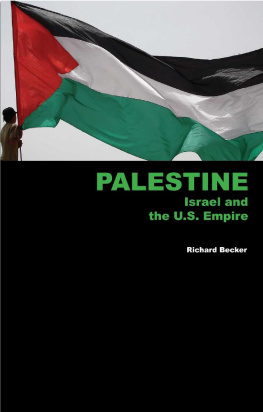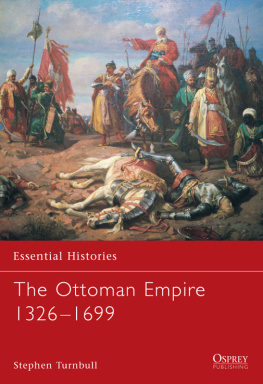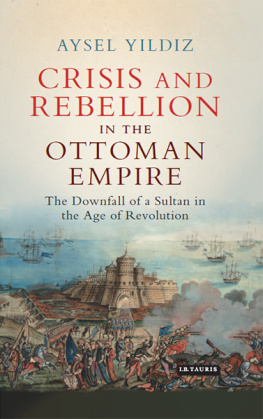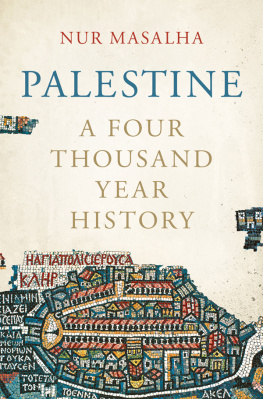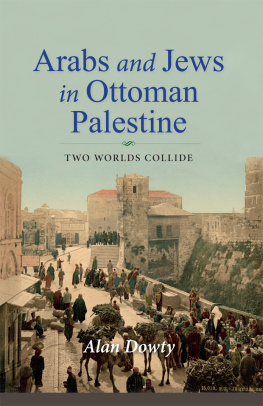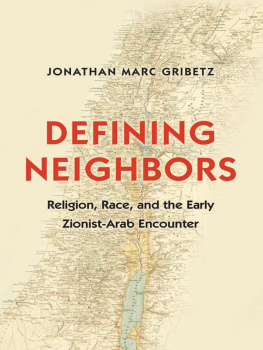Farid Al-Salim is a Palestinian American who earned his PhD degree in 2008 from the University of Arkansas at Fayetteville, King Fahd Center of Middle East and Islamic Studies. He worked as Assistant Professor of Middle East/Islamic Studies/Security and International Studies at the University of Arkansas, Kansas State University and the University of Memphis. Currently, he is an assistant professor of Modern Arab history at Qatar University in Doha.
PALESTINE AND
THE DECLINE OF
THE OTTOMAN
EMPIRE
Modernization and the Path to
Palestinian Statehood
F ARID A L-SALIM
New hardback edition published in 2015 by
I.B.Tauris & Co Ltd
London New York
www.ibtauris.com
Copyright 2015 Farid Al-Salim
The right of Farid Al-Salim to be identified as the author of this work has been asserted by the author in accordance with the Copyright, Designs and Patents Act 1988.
All rights reserved. Except for brief quotations in a review,this book, or any part thereof, may not be reproduced, stored in or introduced into a retrieval system, or transmitted, in any form or by any means, electronic, mechanical, photocopying, recording or otherwise, without the prior written permission of the publisher.
References to websites were correct at the time of writing.
Library of Ottoman Studies 40
ISBN: 978 1 78076 456 6
eISBN: 978 0 85773 719 9
A full CIP record for this book is available from the British Library
A full CIP record is available from the Library of Congress
Library of Congress Catalog Card Number: available
This book is dedicated to my parents, Muhammad Salim
and Omaya Al-Salim. Their unlimited love and endless support
made this books completion possible
ACKNOWLEDGEMENTS
I would like to thank all those people who made this book possible and an unforgettable experience for me.
First of all, I would like to express my deepest sense of gratitude to my mentor Dr. Joel Gordon who offered his continuous advice and encouragement from 2001 until the present time. I thank him for the systematic guidance and great effort he put into training me in historical studies in association with interdisciplinary themes. He was and remains my best role model for an expert, mentor and teacher.
I will forever be thankful to all of my former professors at the University of Arkansas: Bill Tucker, Ted Swedenburg, Thomas Kennedy, Mounir Farah and Najib Ghadbian for their limitless aid in discussing things over, reading, writing and giving comments. I am indebted to all of them for their inexhaustible help and support.
A special thanks goes to Dr. Kamal Abdulfattah of Birzeit University for providing many answers and guidance to indigenous resources.
Financially, this book was possible because of the support of King Fahd Center of Middle East and Islamic Studies at the University of Arkansas, the Palestinian-American Research Center (PARC) fellowship and the American Center of Oriental Studies (ACOR) in Amman, Jordan fellowship. I am deeply grateful to all of them for covering my travel and research expenditures.
Finally, I take this opportunity to express the profound appreciation from my deep heart to my beloved parents for their love and continuous support both spiritually and materially.
CHAPTER 1
INTRODUCTION
Palestine can be divided into five main subdivisions as follows: Galilee and its narrow coastal plains around and north of Haifa-Acre Bay, including the Marj Ibn Amir, Lake Tiberias and the Hule Basin; the central and southern coastal plains with Tulkarm, Jaffa, Ramla and Gaza as centres; the central mountain areas of Nablus, Jerusalem and Khalil (Hebron); the Jordan Rift Valley south of Beisan, including the Jericho oasis; and the Naqab Desert, to the east and southeast of Gaza, with Bir al-Sab as its centre.
In few countries of the world has geography influenced history more than in Palestine. Its geographical position as a land bridge between Asia and Africa, and between the Mediterranean and Red seas, and the great variations within the land's natural conditions (geology, topography and climate), have deeply affected the history of the country and influenced the course of human activities. Globally, Palestine's land bridge position connects far-reaching destinations in Europe at one end and eastern Asia at the other. Palestine is also part of a transitional area between the wet temperate maritime zone and the arid tropical zone (in other words, a transitional area between the desert and the sown). Being a part of the borderlands between the Mediterranean and the Arabian cultural zone, Palestine was always exposed to and influenced by any great developments or changes happening in both East and West. Regionally, Palestine was affected by the events and developments happening in both of its neighbours, Lebanon, Syria, Jordan and Egypt.
One of the main goals of this book is to review historiographical trends and set new directions for late Ottoman history. This book demonstrates that current research on the late Ottoman Empire still operates within the confines of the centreperiphery model, and sustains dualistic and state-centred narratives. Second, I argue that a historical trajectory framework is a better analytical tool and empirical strategy. I show that the Ottoman Empire was characterized by distinct imperial paths during the nineteenth century, each representing an alternative route to statesociety and localglobal relations. The book further suggests that a trajectory-specific approach can provide new prospects for understanding the modern history of the Middle East in general and Palestine in particular especially from social and economic perspective.
In the last decades of Ottoman rule, Palestine was administratively divided into two provinces. Jerusalem, the southern province, was made an administratively independent province directly linked with the Ministry of Interior in Istanbul. Damascus, and after 1888 Beirut Province, contained the rest of the country. This included the northern part of Palestine and was divided into the sanjaks of Acre and Nablus. Both provinces helped to form the foundation of modern Palestine. Modernity in Palestine did not come about as a result of specific events, but rather as the cumulative effect of political, economic, and social developments that took place during the nineteenth century and persisted throughout the final years of the Ottoman period. Even though Palestine did not constitute a single administrative or political unit throughout this period, the history of its various districts and communities shows a striking cohesiveness. This cohesiveness, especially among the political and social elites, constitutes the foundation of modern Palestinian society, which continued to develop from the mid-nineteenth century until the twentieth century despite changing relationships between the central authority and local leaders.
This book addresses the role of the late Ottoman administrative system and the new social structure in provincial Palestine. In particular, it emphasizes the impact of Ottoman reforms on the new administrative centres and countryside of Palestine, using the history of the District of Tulkarm between 1876 to 1918 as a case study. Tulkarm, the administrative centre of this qada (district), was a small village in central Palestine until 1876, when the Ottomans created a new qada called Bani Sa`b-Tulkarm. The Ottoman strategy in constructing the new districts shifted authority away from established local and regional leaders toward new towns which previously had not held political or economic power. As such, from 1876 to 1918, the village of Tulkarm, which became the seat of the new qada`, and its district underwent social, economic, demographic, and environmental changes that vividly illustrate the cumulative effect of modernity throughout Palestine. The Ottomans combined centralized administrative practice with decentralized practice by the incorporation of intermediate groups such as grant lands holders and tax farmers into the central administration. This new policy started in 1839 and reached a new stage by 1858 with the Ottoman Land Code.


